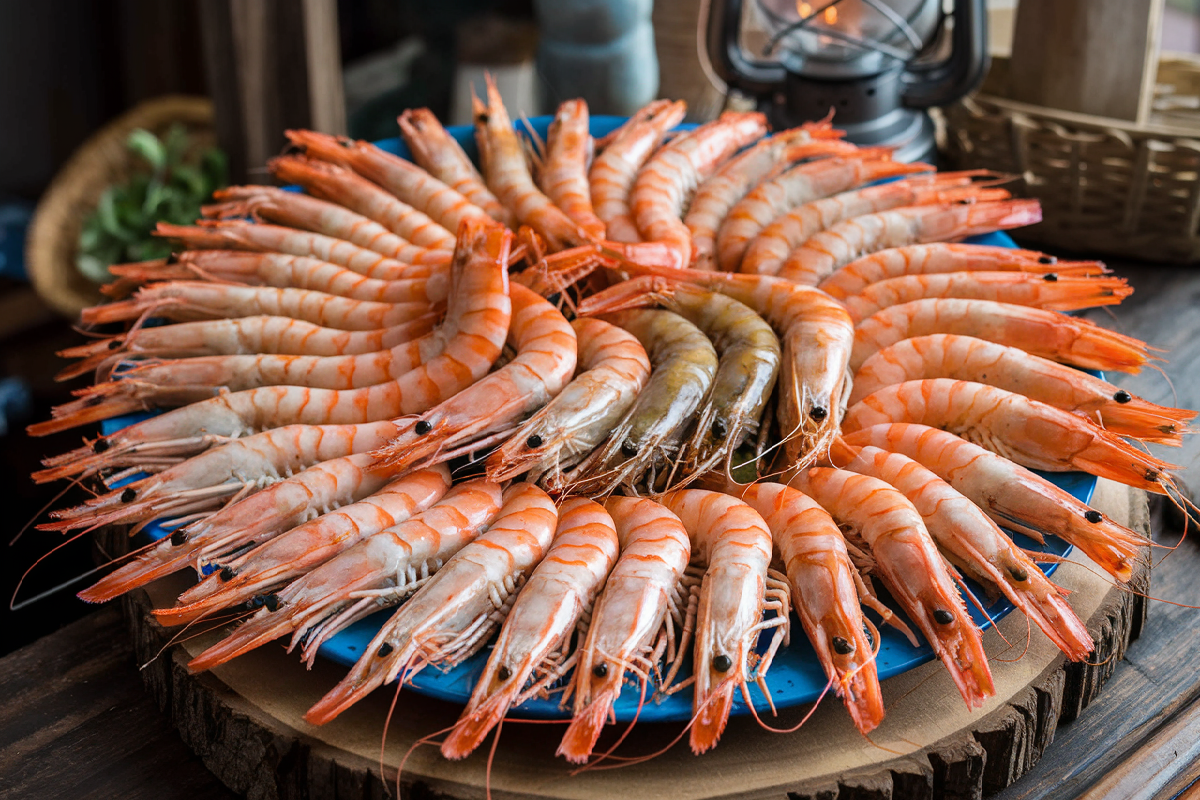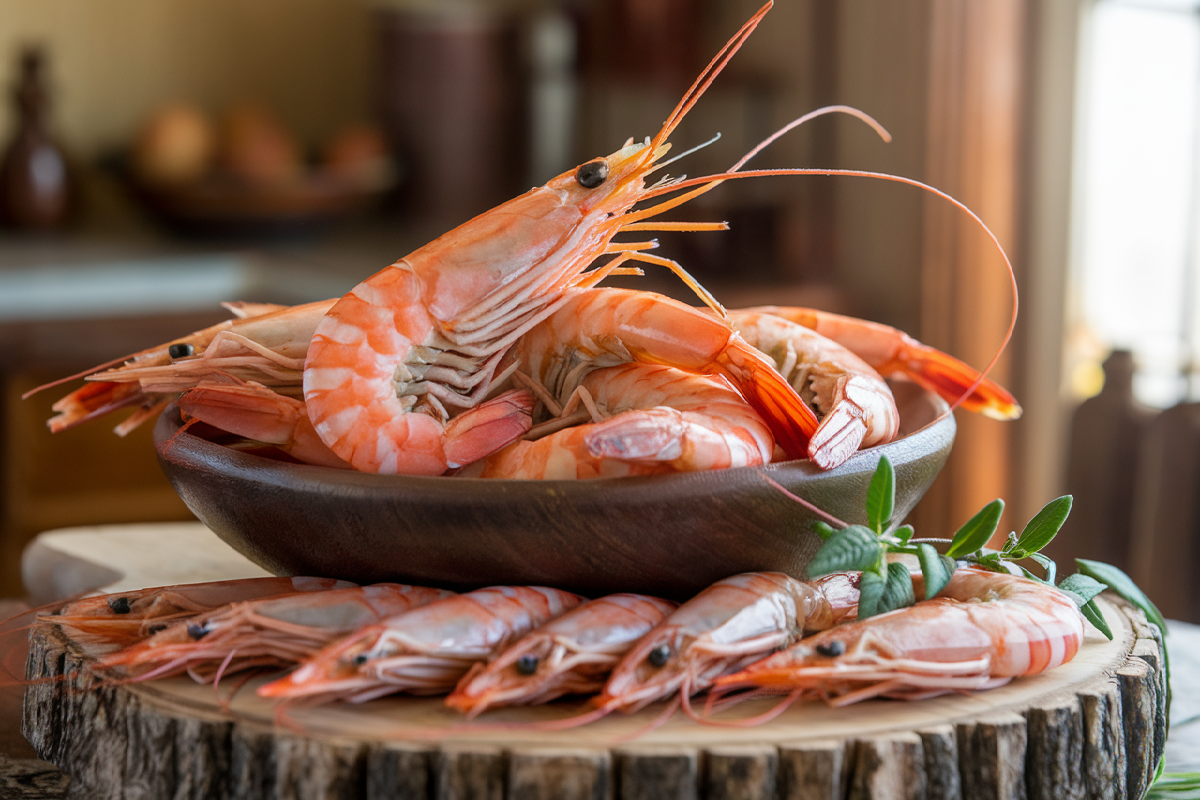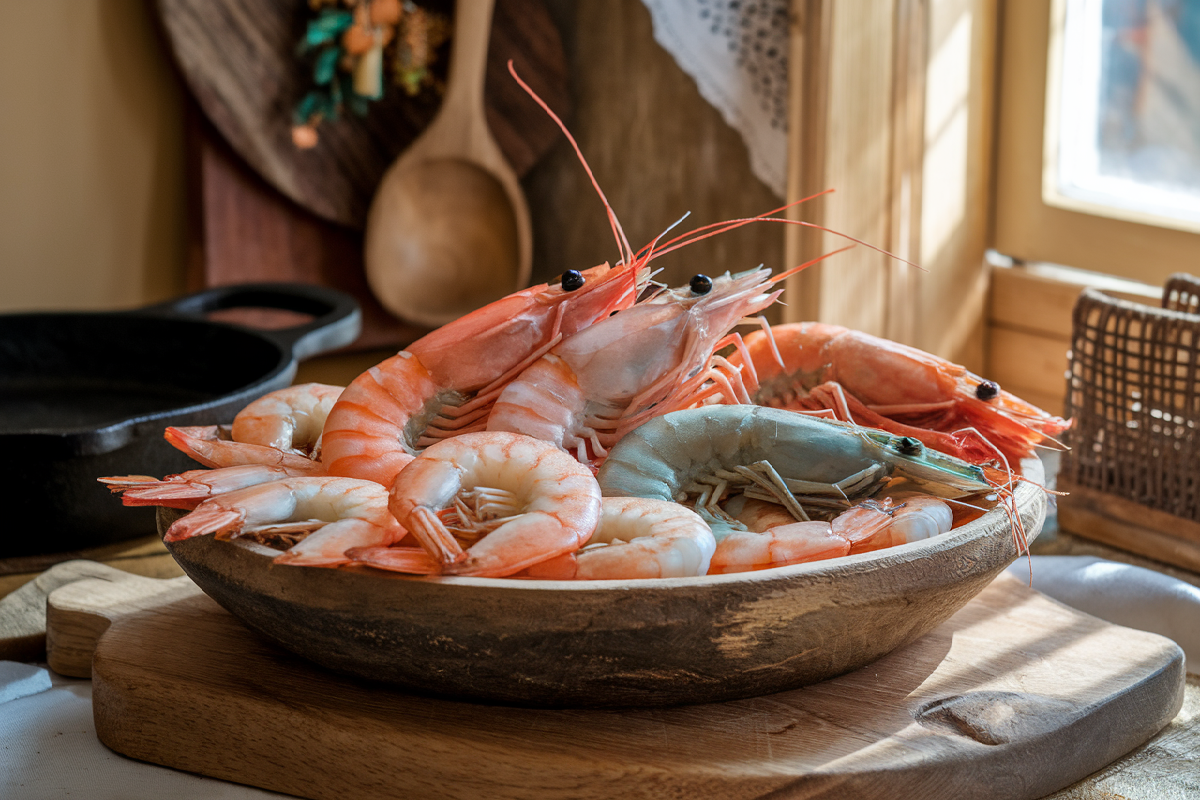Argentine red shrimp have become a popular choice among seafood lovers due to their unique flavor and delicate texture. These shrimp, known for their vibrant red color, are often compared to lobster for their sweetness. But one common question arises in kitchens worldwide: do you have to devein Argentine red shrimp before cooking? In this comprehensive guide, we’ll explore everything you need to know about deveining shrimp, its impact on flavor and health, and culinary perspectives from experts.
What is Argentine Red Shrimp?
Argentine red shrimp, native to the cold waters off the coast of Argentina, are a prized seafood choice for their distinct taste and texture. These shrimp are not just any ordinary shrimp; they are larger, meatier, and have a flavor profile that many find superior to other shrimp varieties.
Habitat and Characteristics
- Cold-water shrimp: Argentine red shrimp thrive in the cold waters of the Southwest Atlantic, which contributes to their sweet, rich flavor.
- Larger size: These shrimp are typically larger than the average shrimp, making them a great choice for gourmet dishes.
- Color and texture: Known for their natural red color even when raw, Argentine red shrimp have a delicate texture that’s often described as tender and juicy.
Because of their size and the distinct characteristics of their habitat, the question of whether to devein these shrimp often arises. Unlike other shrimp, where the vein may be more noticeable or pronounced, the digestive tract of Argentine red shrimp can be less obvious, leading to debates on whether deveining is necessary.
The Anatomy of Shrimp: Understanding Deveining
To fully appreciate the deveining process, it’s important to understand the anatomy of shrimp. The term “deveining” is somewhat misleading, as the “vein” referred to is actually the shrimp’s digestive tract. This dark line running along the back of the shrimp can contain remnants of the shrimp’s last meal, which may include sand, grit, or other materials.
What is the Shrimp’s Vein?
- Digestive tract: The vein is the shrimp’s digestive system, located along the back. It’s a tubular structure that runs from the head to the tail.
- Content of the vein: Depending on when the shrimp was last fed, the vein may contain partially digested food or sand, which can affect the texture of the shrimp when cooked.
Do All Shrimp Have Veins?
Yes, all shrimp have this digestive tract, but the size and visibility of the vein can vary depending on the species. In smaller shrimp, the vein might be barely noticeable, while in larger shrimp like Argentine red shrimp, it can be more prominent.
Why Devein Shrimp?
Deveining is primarily done for two reasons:
- Aesthetic reasons: Many cooks and chefs prefer to remove the vein to improve the visual appeal of the dish. The vein can appear as a dark line and may be unappetizing to some diners.
- Textural reasons: The contents of the vein can sometimes add a gritty texture to the shrimp, which might detract from the overall eating experience.
Do You Have to Devein Argentine Red Shrimp?

The decision to devein Argentine red shrimp is largely a matter of personal preference. Here are some factors to consider:
Culinary Practices
In professional kitchens, the decision to devein shrimp can depend on the dish being prepared:
- High-end dishes: In fine dining, where presentation is key, shrimp are almost always deveined to ensure a clean and appealing appearance.
- Casual cooking: For home cooking or casual dishes, many people choose not to devein the shrimp, especially if they are smaller or the vein is not very noticeable.
Health Implications
From a health perspective, eating shrimp with the vein intact is generally considered safe. However, there are a few considerations:
- Potential health risks: The vein can contain bacteria or pathogens, particularly if the shrimp isn’t fresh. However, cooking shrimp at the correct temperature typically kills any harmful bacteria.
- Allergy considerations: For those with shellfish allergies, it might be advisable to remove the vein to minimize any potential allergens.
Flavor and Texture
The vein can impact both the flavor and texture of the shrimp:
- Flavor: Some believe that the vein imparts a slightly bitter or earthy taste, though this is often subtle and may not be noticeable in dishes with strong flavors.
- Texture: Removing the vein can result in a cleaner, more refined texture, which can be especially important in delicate or lightly flavored dishes.
The Case Against Deveining
Not everyone agrees that deveining is necessary. Some chefs and home cooks argue that the process is time-consuming and unnecessary, particularly for smaller shrimp or in dishes where the vein is not likely to be noticed. In some culinary traditions, the vein is left intact, and the shrimp are enjoyed whole.
Deveining Methods: A Step-by-Step Guide
If you decide to devein your Argentine red shrimp, here’s how you can do it:
Tools You’ll Need
- Paring knife: A small, sharp knife is ideal for making the incision needed to expose the vein.
- Deveining tool: Specialized tools are available that make the process quicker and easier.
Step-by-Step Process
- Peel the shrimp: If you prefer, start by peeling the shrimp. Some people choose to leave the shell on for certain cooking methods, such as grilling or broiling, where the shell helps protect the shrimp from overcooking.
- Make an incision: Using the paring knife, make a shallow cut along the back of the shrimp, from the head to the tail. Be careful not to cut too deep, as you only need to expose the vein.
- Remove the vein: Use the tip of the knife or the deveining tool to lift the vein out of the shrimp. It should come out in one piece, but if it breaks, simply rinse the shrimp under cold water to remove any remnants.
- Rinse and dry: Once the vein is removed, rinse the shrimp under cold water and pat dry with a paper towel before cooking.
Alternative Deveining Methods
- Without a knife: Some people use a toothpick to devein shrimp, particularly when the shell is left on. Insert the toothpick under the vein and gently lift it out.
- Rinse method: For smaller shrimp, where the vein is less noticeable, some cooks simply rinse the shrimp thoroughly in cold water rather than making an incision.
Cooking Argentine Red Shrimp
Once you’ve decided whether to devein your shrimp, the next step is cooking. Argentine red shrimp are versatile and can be prepared in a variety of ways. Here are some popular methods:
Grilling
Grilling Argentine red shrimp is a great way to bring out their natural sweetness. The grill’s high heat sears the shrimp, locking in their juices and enhancing their flavor.
- Marinade options: A simple marinade of olive oil, garlic, lemon juice, and herbs works well. Marinate the shrimp for 15-20 minutes before grilling.
- Grill time: Cook the shrimp over medium-high heat for about 2-3 minutes per side, or until they are opaque and slightly charred.
Sautéing
Sautéing is a quick and easy method that’s perfect for busy weeknights. Argentine red shrimp cook quickly in a hot pan, making them an ideal choice for a fast yet flavorful meal.
- Butter or oil?: Use either butter or olive oil as your cooking fat. Butter adds richness, while olive oil imparts a lighter flavor.
- Seasonings: Simple seasonings like garlic, chili flakes, and parsley enhance the shrimp’s natural flavor. Sauté for 2-3 minutes per side, until the shrimp are pink and curled.
Boiling
Boiling is another simple method, especially if you’re planning to use the shrimp in a cold dish, such as a salad or cocktail.
- Boiling tips: Add salt, lemon juice, and bay leaves to the water for extra flavor. Boil the shrimp for 2-3 minutes, until they turn pink and opaque.
- Serving suggestion: For a classic presentation, serve boiled shrimp with a cocktail sauce made from ketchup, horseradish, and lemon juice.
Baking
Baking shrimp is a hands-off method that’s perfect for when you want to prepare a large batch without standing over the stove.
- Baking with shells on: If you’ve left the shells on your shrimp, baking is an excellent option. The shells help protect the delicate meat from overcooking.
- Baking time: Preheat your oven to 400°F (200°C). Arrange the shrimp in a single layer on a baking sheet and bake for 10-12 minutes, or until the shrimp are opaque and cooked through.
Expert Culinary Insights
To devein or not to devein? We turned to professional chefs for their opinions on this culinary dilemma. The responses were varied, highlighting that there is no one-size-fits-all answer.
Chef John Doe – Fine Dining
Chef John, who specializes in fine dining, always opts to devein shrimp. “In a high-end restaurant, presentation is everything. The last thing you want is for a customer to notice an undeveined shrimp on their plate. It’s about attention to detail.”
Chef Jane Smith – Home Cooking
Chef Jane, known for her approachable home cooking style, takes a more relaxed approach. “For me, it depends on the dish. If I’m making something rustic, like a shrimp stew or paella, I don’t bother deveining. But if I’m serving shrimp as a centerpiece, like in a shrimp cocktail, I’ll take the time to devein.”
Chef Alex Rivera – Seafood Specialist
Chef Alex, a seafood specialist, emphasizes the importance of freshness. “If the shrimp are fresh, I don’t worry too much about deveining. The flavor is what matters most, and a fresh shrimp will always taste great, deveined or not.”
FAQs About Deveining Shrimp
Here are some frequently asked questions to help clarify whether or not you need to devein shrimp:
Is it Really Necessary to Devein Shrimp?
It’s not strictly necessary, but it can improve the appearance and texture of your dish. Whether or not you devein your shrimp is largely a matter of personal preference.
What Happens if You Don’t Devein Shrimp?
If you don’t devein shrimp, they will still be safe to eat as long as they are properly cooked. The main drawback is the potential for a gritty texture or a slightly off taste if the vein contains sand or grit.
Are There Any Health Risks Associated with Not Deveining Shrimp?
There are generally no significant health risks, especially if the shrimp is fresh and cooked properly. However, those with shellfish allergies or sensitivities might prefer to remove the vein as a precaution.
Does Deveining Affect the Flavor of the Shrimp?
Some people believe it can, especially in larger shrimp where the vein is more prominent. The vein might impart a slightly bitter or earthy taste, but this is usually minimal.
Is Deveining Necessary for All Sizes of Shrimp?
Deveining is more common with larger shrimp, where the vein is more visible. Smaller shrimp have less noticeable veins and are often left undeveined, particularly in dishes where they are used whole.
Conclusion

Whether or not you devein Argentine red shrimp is ultimately up to you. While there are some benefits to deveining, such as improved texture and presentation, it’s not strictly necessary from a health standpoint. Your decision will likely depend on the dish you’re preparing and your personal preferences.
Argentine red shrimp, with their sweet flavor and delicate texture, are a versatile and delicious seafood option. Whether you choose to devein them or not, they’re sure to be a hit in any recipe.

